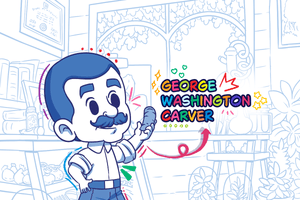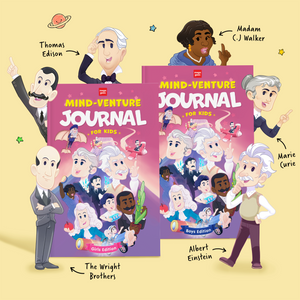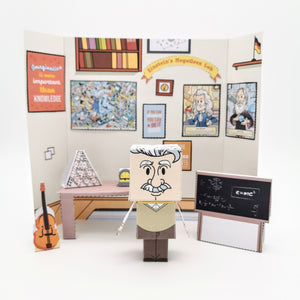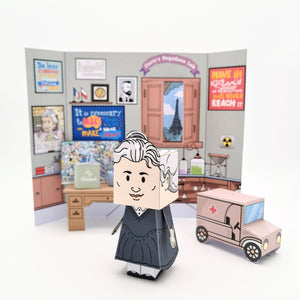George Washington Carver for Kids: The Plant Genius
Did you know there was once a boy who could talk to plants? Well, not exactly talk, but he understood them so well that people called him the "Plant Doctor." This boy, George Washington Carver, grew up to become one of the most important scientists in American history.
From humble beginnings, Carver's curiosity and love for nature led him on an incredible journey. He went from healing sick plants as a child to revolutionizing farming as an adult. Get ready to explore the amazing life of a boy who became a famous scientist, inventor, and teacher. George Washington Carver's story is full of surprises, challenges, and incredible achievements that still impact our lives today!
- Born: Around 1864
- Died: January 5, 1943 (aged 78–79)
- Nationality: American
- Education: Iowa State Agricultural College
- Occupation: Scientist, Inventor, Teacher
- Best known for: Promoting crop rotation and developing numerous products from peanuts and sweet potatoes
Table of Contents
- Early Life and Childhood
- Education and Early Interests
- Professional Career: The Tuskegee Years
- Major Achievements: The Peanut Man and More
- Personal Life: A Man of Many Talents
- Later Years and Legacy: Inspiring Future Generations
- George Washington Carver Facts for Kids
- FAQ: Your Questions About George Washington Carver
- Quotes by George Washington Carver
Early Life and Childhood: From Slave to Curious Explorer
A Challenging Beginning
George Washington Carver's life began in extraordinary circumstances. Born into slavery on a farm in Diamond Grove, Missouri, around 1864, his early years were marked by tragedy and triumph. The exact date of his birth remains a mystery, as birth records weren't kept for enslaved people.
As an infant, George faced a terrible ordeal. He, his mother Mary, and his sister were kidnapped by raiders. Moses Carver, the farm's owner, sent out a search party, and only baby George was recovered. Tragically, he never saw his mother or sister again. George joined his older brother James on the farm, and in a twist of fate that would change their lives, Moses and his wife, Susan, decided to raise both boys as their own.
The Plant Doctor is Born
Growing up on the Carver farm after the abolition of slavery, George was a frail child. Unable to handle heavy farm work, he spent his days exploring the woods surrounding the farm. It was during these adventures that his passion for plants took root. He collected various specimens and even cultivated a secret garden of his own.
Young George's knack for nurturing plants didn't go unnoticed. By the time he was 10 or 11, neighbors began calling him "The Plant Doctor." He would walk around with a small bag, reminiscent of a doctor's kit, filled not with medicine but with plant samples. Adults sought his advice on how to care for their ailing plants, a remarkable responsibility for a child his age.
Education and Early Interests: A Thirst for Knowledge
The Long Walk to Learning
George Washington Carver's pursuit of education was a testament to his determination and perseverance. At a time when many African Americans struggled to access even basic schooling, George's thirst for knowledge drove him to extraordinary lengths.
When George was about 12 years old, he set out to attend a school for Black children in Neosho, Missouri. This wasn't a simple journey - the school was nearly 10 miles away from the Carver farm. Imagine walking 10 miles just to get to school! But for George, no distance was too far when it came to learning. He would make this long trek weekly, staying in town during school days and returning home on weekends.

Upon arriving in Neosho, George faced another challenge: he had nowhere to stay. With no money and no connections in the town, he slept in a barn on his first night. Fortunately, he soon met a kind couple, Andrew and Mariah Watkins, who took him in and became his foster parents. To support himself, George worked odd jobs around town, showing that he was willing to do whatever it took to get an education.
A Journey of Many Miles
This was just the beginning of George's educational odyssey. Over the next decade, he moved from town to town across the Midwest, working various jobs to support himself while attending different schools. He washed dishes, did laundry, and even worked as a cook. All the while, he soaked up knowledge like a sponge, excelling in his studies despite the challenges he faced.
Breaking Barriers in Higher Education
In 1890, at around 26 years old, George was accepted into Simpson College in Iowa to study art and piano. His talent for painting flowers and plants was remarkable, but one of his teachers spotted something even more special in George. She encouraged him to pursue his true passion - botany.
Taking this advice to heart, George transferred to Iowa State Agricultural College (now Iowa State University) in 1891. Here, he made history as the first African American student at the college. Despite facing discrimination, George's brilliance shone through. He earned his bachelor's degree in 1894 and was invited to stay on for a master's degree, which he completed in 1896.
During his time at Iowa State, George's fascination with plants blossomed into expertise. He conducted groundbreaking research on plant pathology and mycology (the study of fungi), gaining recognition from his professors and peers alike. His master's thesis on plant grafting was considered a significant scientific contribution.
George's educational journey wasn't just about personal achievement. With each step, he was breaking barriers and paving the way for other African American students. He never forgot the struggles he faced and was determined to use his education to help others.
Little did George know that his hard-earned knowledge and passion for plants would soon lead him to a place where he could make a real difference in the lives of many - a journey that would earn him the nickname "The Wizard of Tuskegee."
Professional Career: The Tuskegee Years
A New Chapter at Tuskegee
In 1896, at the age of 32, George Washington Carver's life took an exciting turn. Booker T. Washington, the famous African American educator and leader, invited Carver to head the Agriculture Department at Tuskegee Institute in Alabama. This was a big deal - Tuskegee was one of the most prestigious Black colleges in the country.

Carver packed his bags and headed south, ready for a new challenge. But when he arrived at Tuskegee, he found things weren't quite what he expected. The agriculture department was barely more than a name - there was no equipment, no land for experiments, and not even a classroom!
Creating Something from Nothing
But Carver wasn't one to back down from a challenge. He created a laboratory from an old toolshed and even made ink for his students from local clay. Despite facing skepticism from colleagues and difficult classes, Carver persevered, driven by his desire to help poor farmers improve their lives.
Innovation on Wheels: The Jesup Agricultural Wagon
Carver's teaching methods were as innovative as his research. He believed in hands-on learning and often took his students out of the classroom and into the fields. In 1906, he created the "Jesup Agricultural Wagon," a mobile classroom that traveled to rural areas to teach farmers about crop rotation and soil conservation. It was like a school on wheels!

But Carver faced some tough times at Tuskegee too. Some of his colleagues thought his ideas were too unconventional. Students sometimes complained that his classes were too difficult. There were even moments when Carver thought about quitting. But he persevered, driven by his desire to help poor farmers improve their lives.
A Legacy of Service
Carver's four decades at Tuskegee transformed him from a promising scientist into a world-renowned agricultural expert. His innovative teaching methods, groundbreaking research, and commitment to helping others changed the face of Southern agriculture. The boy who once whispered to plants had become a man whose voice echoed across farms throughout the South, bringing hope and new possibilities to countless farmers.
Major Achievements: The Peanut Man and More
The Peanut Revolution
George Washington Carver's most famous work revolved around the humble peanut. In the early 1900s, cotton was king in the South, but years of cotton farming had depleted the soil, leaving farmers struggling with poor yields and economic hardship. Carver recognized this as both a challenge and an opportunity.
His solution was twofold: First, he promoted crop rotation with peanuts and other legumes, which naturally replenish soil nutrients. This was a radical departure from traditional Southern farming practices, Crop rotation means planting different crops in the same field each year. This helps keep the soil healthy and full of nutrients, just like eating different foods keeps our bodies healthy! Second, to make this new crop profitable for farmers, Carver set out to create demand by finding new uses for peanuts.
By 1916, Carver had developed over 300 products from peanuts! These ranged from food items like peanut butter and peanut flour to industrial products like shaving cream and glue. He even created peanut-based medicines and cosmetics. This innovative approach not only helped rejuvenate Southern soil but also opened up new markets for farmers, providing them with economic alternatives to cotton.

Carver's work with peanuts earned him the nickname "The Peanut Man" and helped revolutionize Southern agriculture, transforming both the environmental and economic landscape of the region.
The Sweet Potato Sensation
Peanuts weren't Carver's only focus. He also worked extensively with sweet potatoes, developing over 100 products from this versatile crop. These included flour, vinegar, ink, and even synthetic rubber. Carver's work with sweet potatoes provided farmers with another alternative crop and opened up new economic opportunities.
The Congressional Spotlight
In 1921, Carver achieved national recognition when he was invited to testify before the U.S. Congress about the potential uses of peanuts. Initially given only 10 minutes to speak, Carver's presentation was so captivating that the chairman extended his time. Carver spoke for over an hour, and his testimony helped secure tariff protection for the peanut industry.
Beyond Peanuts and Potatoes
While peanuts and sweet potatoes were his most famous subjects, Carver's research extended to many other areas:
- He developed a technique for producing paints and stains from Alabama clay, creating a palette of 500 colors.
- Carver invented a process for producing synthetic marble from wood shavings.
- He experimented with alternative fuels, including ethanol from sweet potatoes.
A Champion of Sustainable Agriculture
Perhaps Carver's greatest achievement was his promotion of sustainable farming practices. He taught farmers about crop rotation, composting, and natural fertilizers long before these became mainstream ideas. His work laid the foundation for modern sustainable agriculture and helped countless small farmers improve their livelihoods.
Sharing Knowledge Freely
Unlike many inventors of his time, Carver rarely patented his inventions. He believed that his discoveries should be freely available to benefit humanity. This generous approach earned him widespread respect and admiration, but it also meant he never became wealthy from his innovations.
Through his numerous achievements, George Washington Carver transformed from a curious farm boy into one of the most respected scientists of his time. His work not only revolutionized agriculture but also improved the lives of countless farmers and consumers. Carver's legacy as an innovator, educator, and humanitarian continues to inspire people around the world to this day.
Personal Life: A Man of Many Talents
A Life Dedicated to Science
George Washington Carver never married or had children. Instead, he devoted his life to his work and his students. He lived simply in a small apartment on the Tuskegee Institute campus, pouring his energy into research and teaching. Despite his fame, Carver remained humble and focused on his mission to help others.
An Artist at Heart
While Carver is best known for his scientific achievements, he was also a talented artist. He studied art at Simpson College before switching to botany, and he continued to paint throughout his life. His favorite subjects were flowers and plants, which he depicted with remarkable skill and attention to detail. Many of his paintings are now preserved in museums.
The Joy of Music
Carver found great pleasure in music. He played the piano and even formed a quartet with some of his fellow professors at Tuskegee. Music provided him with relaxation and inspiration, offering a balance to his scientific pursuits.
A Man of Faith
Religion played a significant role in Carver's life. He was a devout Christian and saw his scientific work as a way to understand and appreciate God's creation. Carver often spoke about the harmony between science and faith, believing that his discoveries were a form of divine revelation.
Nature's Best Friend
Carver's love for nature extended beyond his scientific interest. He enjoyed long walks in the woods, often rising before dawn to commune with nature. These walks were not just for pleasure; Carver claimed that many of his ideas came to him during these solitary rambles.
A Needle and Thread
Surprisingly for a man of his era, Carver enjoyed needlework. He was skilled at crocheting and embroidery, often making his own lace for his shirts. This hobby showcased Carver's patience and attention to detail, qualities that also served him well in his scientific work.
Later Years and Legacy: Inspiring Future Generations
Honors and Recognition
In his later years, George Washington Carver received numerous honors for his contributions to science and agriculture. In 1923, he was awarded the Spingarn Medal from the NAACP for his distinguished service to science. Despite his growing fame, Carver remained focused on his work and teaching at Tuskegee.
Advisor to Presidents
Carver's expertise was sought by three American presidents. Theodore Roosevelt, Calvin Coolidge, and Franklin D. Roosevelt all consulted him on agricultural matters. This recognition at the highest levels of government highlighted the national importance of Carver's work.
The George Washington Carver Foundation
In 1940, at the age of 76, Carver used his life savings to establish the George Washington Carver Foundation at Tuskegee Institute. The foundation aimed to continue his research and support young African Americans pursuing careers in science.
Final Days and Lasting Impact
Carver continued working until his last days. He passed away on January 5, 1943, at the age of 78. After his death, President Franklin D. Roosevelt signed legislation for Carver to receive his own monument, an honor previously reserved only for presidents.
A National Monument
In 1943, the George Washington Carver National Monument was established in Diamond, Missouri, at the site of the farm where Carver was born. It was the first national monument dedicated to an African American and to a non-president.
Inspiring Future Scientists
Today, Carver is recognized as an early pioneer of environmentalism and sustainable agriculture. His life story and teachings continue to inspire scientists, particularly those from underprivileged backgrounds, showing what can be achieved through determination and a thirst for knowledge.
George Washington Carver Facts for Kids
- Carver's Cooking Skills: Did you know that Carver was an excellent cook? He often created new recipes using the crops he studied, like sweet potato cookies and peanut ice cream!
- The Mystery Middle Initial: Carver added the "W" to his name when he was in college. He never revealed what it stood for, keeping it a mystery to this day.
- A Flower for a Friend: Carver developed a friendship with Helen Keller. He once created a blue paint from Alabama clay and painted her a picture of blue morning glories, her favorite flower.
- The $100 Million Man?: There's a popular story that Carver turned down a $100 million offer from Thomas Edison to work for him. While this tale is often repeated, there's no solid evidence it actually happened.
- Nature's Alarm Clock: Carver didn't own an alarm clock. Instead, he relied on a rooster to wake him up every morning at 4 AM for his nature walks.
- The Peanut Wizard: Some people claimed Carver could make a full breakfast, including coffee, from peanuts. While this is likely an exaggeration, it shows how amazed people were by his peanut inventions!
- A Meeting of Great Minds: In 1935, George Washington Carver traveled to India and met with Mahatma Gandhi. They discussed agriculture and nutrition, with Carver advising Gandhi on the potential uses of peanuts and sweet potatoes to supplement the Indian diet. This meeting brought together two of the most influential figures of their time, both dedicated to improving the lives of others.
- The Traveling Plant Doctor: As an adult, Carver continued his childhood practice of helping sick plants. He would travel with a bag of equipment to help farmers diagnose and treat plant diseases.
- A Man of Many Names: Throughout his life, Carver was given many nicknames. Besides "The Plant Doctor," he was also called "The Wizard of Tuskegee" and "The Peanut Man."
- Carver's Car: Despite his friendship with Henry Ford, Carver never learned to drive. He preferred walking or being driven by others, using travel time to observe nature.
FAQ: Your Questions About George Washington Carver
Did George Washington Carver invent peanut butter?
Contrary to popular belief, Carver didn't invent peanut butter. However, he did develop many other peanut products and helped popularize peanuts as a crop.
How many inventions did Carver create?
Carver developed hundreds of products, including about 300 from peanuts and 118 from sweet potatoes. However, he didn't patent most of his inventions.
Why was Carver called "The Plant Doctor"?
As a child, Carver had a knack for nurturing sick plants back to health. Neighbors would ask for his help with their plants, earning him this nickname.
Did Carver really talk to plants?
While Carver didn't literally talk to plants, he spent a lot of time observing and studying them. He often said that nature spoke to him and shared its secrets.
Was Carver born into slavery?
Yes, Carver was born into slavery around 1864, just before slavery was abolished in the United States.
Did Carver ever marry or have children?
No, Carver never married or had children. He dedicated his life to his research and teaching.
What was Carver's most famous invention?
While Carver is known for many inventions, his work with peanuts is probably the most famous. He developed hundreds of products from peanuts, including milk, cheese, coffee, and even soap.
How did Carver help farmers?
Carver taught farmers about crop rotation, using peanuts and sweet potatoes to replenish soil depleted by cotton. He also created new markets for these crops by inventing many products from them.
Was Carver the first African American to earn a bachelor's degree in science?
Carver was the first African American to earn a Bachelor of Science degree from Iowa State Agricultural College (now Iowa State University), but not the first in the entire United States.
What was Carver's educational background?
Carver faced many challenges in getting an education. He moved from school to school as a child and young adult before eventually earning his bachelor's and master's degrees from Iowa State.
How is Carver's work still important today?
Many of Carver's ideas, like crop rotation and using natural materials to make products, are still used in farming and industry today. His work on sustainability and environmental conservation is more important than ever as we face challenges like climate change.
Quotes by George Washington Carver
- "Where there is no vision, there is no hope." This quote reflects Carver's belief in the power of imagination and forward-thinking. He saw scientific discovery as a way to create a better future for all.
- "Education is the key to unlock the golden door of freedom." Carver understood the transformative power of education from his own life experience. He believed that learning could open up opportunities and lead to personal and societal progress.
- "When you do the common things in life in an uncommon way, you will command the attention of the world." This quote encapsulates Carver's approach to his work. He took ordinary crops like peanuts and sweet potatoes and found extraordinary uses for them, gaining worldwide recognition in the process.
- "Nature is an unlimited broadcasting station, through which God speaks to us every hour, if we will only tune in." This quote reflects Carver's deep spirituality and his belief that nature held many secrets waiting to be discovered. It shows how he saw his scientific work as a way of understanding the divine.
- "Ninety-nine percent of the failures come from people who have the habit of making excuses." Carver faced many obstacles in his life but never let them stop him. This quote encourages perseverance and taking responsibility for one's own success.
- "There is no short cut to achievement. Life requires thorough preparation - veneer isn't worth anything." This quote emphasizes Carver's belief in hard work and thorough study. It reflects his own journey of lifelong learning and dedication to his craft.
These quotes provide insight into Carver's philosophy, showing his thoughts on education, nature, spirituality, and personal development. They reveal a man who was not just a brilliant scientist, but also a thoughtful and inspiring individual.


















